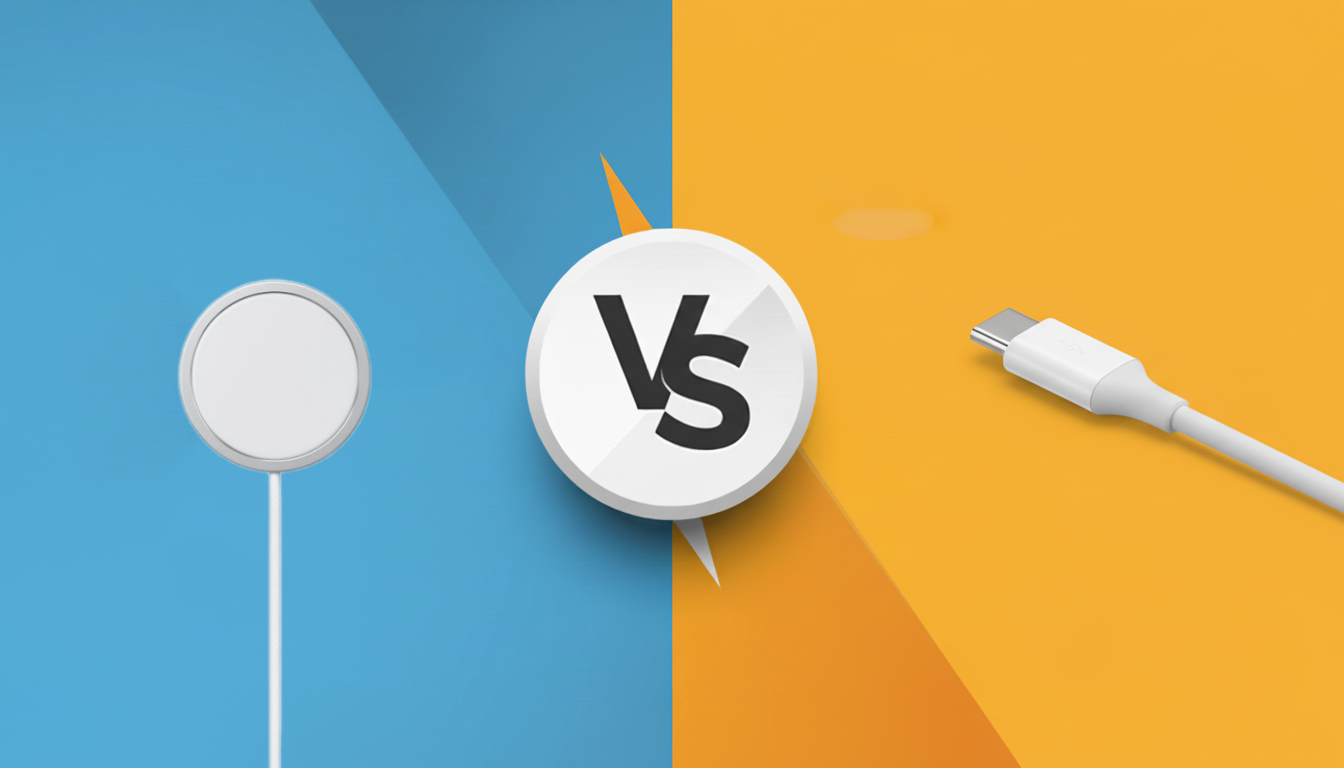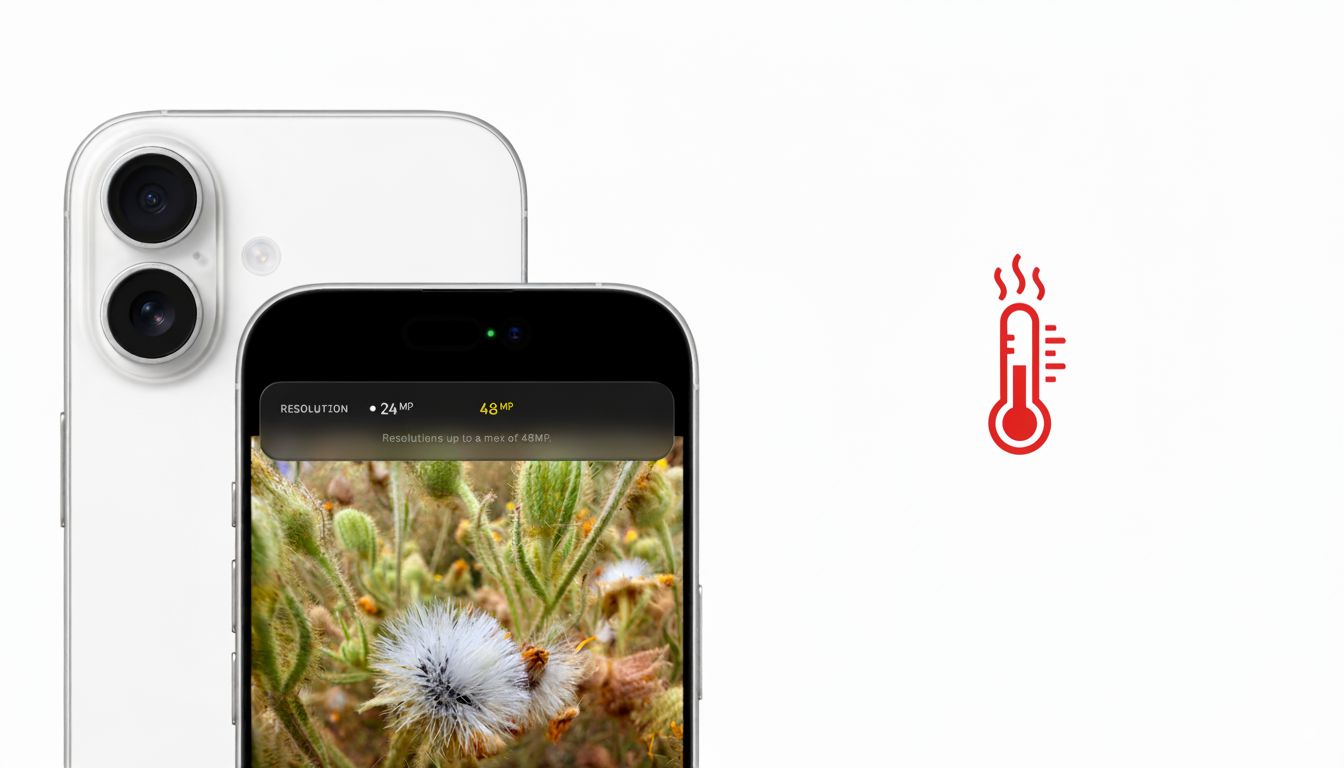Imagine this: your iPhone is down to 2% while you’re rushing to leave the house. Do you grab your USB-C cable for a quick wired boost, or snap on a MagSafe charger for wireless convenience? This everyday dilemma is why the iPhone MagSafe vs. USB-C debate has become one of the hottest discussions among Apple users in 2025.
In this guide, we’ll dive deep into MagSafe vs. USB-C charging, breaking down speed, real-world use cases, long-term battery health, and how to maximize performance. By the end, you’ll know exactly when to reach for each—and why the smartest choice may not be picking one side at all.
What Is MagSafe and USB-C?
Before we compare them head-to-head, it helps to understand what each technology really is.
MagSafe is Apple’s proprietary magnetic charging system, introduced with the iPhone 12 in 2020. Using a ring of magnets on the back of the device, it allows your iPhone to snap into place on a wireless charger, ensuring perfect alignment for efficient power transfer. Beyond charging, MagSafe also supports an entire ecosystem of accessories—wallets, stands, battery packs, and even car mounts. In 2025, thanks to Qi2 updates, MagSafe and USB-C charging speed has narrowed, with MagSafe capable of up to 25W in ideal conditions.
USB-C, on the other hand, is the universal wired connection standard used across phones, tablets, laptops, and accessories. Its advantages are versatility, high-speed charging, and data transfer. Apple adopted USB-C since iPhone 15 lineup released, aligning with global regulations and user demand. With USB-C, one cable can charge your iPhone, MacBook Pro, AirPods, and even non-Apple devices.
Put simply: MagSafe vs. USB-C comes down to lifestyle choices. MagSafe emphasizes ease and design integration, while USB-C delivers unmatched speed and cross-device convenience.
We’ve also covered MagSafe vs. Lightning in detail for those comparing Apple’s past and present charging standards.”
How Fast is MagSafe and USB-C?
When you’re in a rush, charging speed is everything. The question of MagSafe vs. USB-C charging speed often decides which method users prefer.
MagSafe Charging Speed:
Standard MagSafe provides 15W charging. With Qi2.2 technology introduced in 205, certain iPhones now support up to 25W wireless charging. In real-world tests, going from 0% to 50% usually takes around 30–40 minutes. However, wireless charging inherently loses energy due to heat, making it less efficient than wired options.
USB-C Charging Speed:
With the iPhone 17, Apple has leveled things up. Thanks to USB-C, the device now supports charging speeds up to 40W, which means you can hit 50% in just around 20 minutes using a certified high-wattage adapter. Even Apple’s official charger remains solid, but pairing your iPhone 17 with a stronger, certified USB-C adapter (30W–40W) unlocks noticeably faster top-ups. For MacBook Pro and iPad Pro users, this isn’t just about phones—USB-C vs. MagSafe wired charging represents the backbone of modern Apple power delivery across multiple devices.
Here’s a quick comparison table for clarity:
| Feature | MagSafe Wireless | USB-C Wired |
|---|---|---|
| Typical Power | 15W (25W with Qi2.2) | 20–40W(or higher) |
| 0–50% Charge | ~30 minutes | ~20 minutes |
| Heat Levels | Higher | Lower |
| Data Transfer | No | Yes |
| Use Case | Nightstands, desks, accessories | Fast boosts, travel, universal charging |
This comparison shows why the MagSafe charger vs. USB-C decision is situational. For speed, USB-C wins hands down. But for convenience, MagSafe often feels more effortless.
How to Choose Between MagSafe vs. USB-C: Real Use Cases
The MagSafe vs. USB-C debate gets clearer when you consider how you actually use your phone day-to-day. Here are some practical scenarios:
- On your nightstand: MagSafe shines. Just drop your phone on the magnetic puck or stand, and it snaps into place for steady overnight charging.
- During a commute: MagSafe car mounts double as wireless chargers, keeping your phone visible for navigation without dangling cables.
- While traveling: USB-C dominates. You only need one cable to charge your iPhone, MacBook Pro, AirPods, and other gadgets. It’s lighter and more efficient for packing.
- For work and study setups: MagSafe stands let you keep your phone upright for FaceTime calls or multitasking, while still charging.
- When battery anxiety hits: USB-C is faster and more reliable in emergencies, giving you more power in less time.
The smartest choice isn’t either/or—it’s knowing when to use both. In fact, modern power solutions like Veger’s hybrid power banks offer wireless charging and USB-C fast charging in a single device, bridging the gap between convenience and performance.
Is MagSafe Better Than USB-C for Battery Health?
Beyond speed and convenience, many users worry about MagSafe and USB-C battery health. Does one method wear out your iPhone battery faster than the other?
Wireless charging, including MagSafe, generates more heat. Heat is the number-one factor that accelerates lithium-ion battery wear. Over time, consistent exposure to higher charging temperatures may slightly shorten overall battery lifespan.
USB-C, by contrast, transfers power more efficiently with minimal heat loss. This means it’s generally gentler on your battery in daily use. For devices like the MacBook Pro, Apple has already optimized charging cycles through USB-C to balance longevity with performance.
That said, Apple’s iOS features like “Optimized Battery Charging” and “Clean Energy Charging” help mitigate long-term damage regardless of whether you use MagSafe or USB-C. So while wired charging edges out wireless in terms of battery health, the difference isn’t drastic if you use both responsibly.
How to Maximize MagSafe or USB-C Performance (Tips & Fixes)
Even with Apple’s optimizations, there are proven ways to improve both charging speed and battery longevity. Below are detailed methods—each designed to be actionable.
1. Use Certified Accessories
One of the most effective ways to maintain performance is by using Apple-certified or MFi-certified charging gear. Non-certified products may deliver inconsistent power, causing overheating or slower speeds. For example, a MagSafe charger or USB-C cable bought from uncertified vendors may not deliver the promised wattage, leading to frustration and possible battery strain. Always check for official certifications.
2. Charge in the 20%–80% Range
Experts recommend avoiding both deep discharges and leaving your phone at 100% for extended periods. Keeping your iPhone between 20% and 80% helps maintain long-term battery health. With USB-C, this is easy thanks to faster top-ups. With MagSafe, leaving it on overnight is fine as iOS will manage charging intelligently, but being mindful adds an extra layer of care.
3. Keep Your Device Cool
Heat is the enemy of battery health. To fix overheating issues, always charge your phone on a flat, hard surface where air can circulate. Avoid charging with MagSafe on beds, couches, or under direct sunlight. With USB-C, remove your case if it traps heat. A cooler environment means both MagSafe and USB-C charging methods work more efficiently.
4. Remove Thick or Metal Cases
MagSafe efficiency drops significantly if your case is too thick or contains magnets and metal plates. This increases charging times and generates extra heat. To fix this, use MagSafe-compatible cases or remove your case while charging. For USB-C, cases matter less, but ultra-rugged cases can sometimes cause connector misalignment or extra stress on the cable.
5. Alternate Between Methods
Instead of sticking exclusively to MagSafe or USB-C, combine both. For example, use USB-C during the day for fast boosts, and MagSafe overnight or at your desk for convenience. This balances MagSafe vs. USB-C battery health concerns while also taking advantage of each method’s strengths.
By applying these fixes, you maximize charging efficiency and extend battery longevity, no matter which side of the USB-C vs. MagSafe debate you’re on.
When USB-C Beats MagSafe (and Vice Versa)
At this point, it’s clear both options have advantages. But when exactly does one outperform the other?
USB-C Beats MagSafe:
- When you need the fastest possible charge.
- When you’re traveling and want one cable for everything.
- When you also need data transfer (backups, syncing, tethering).
- When managing long-term battery health with cooler charging.
MagSafe Beats USB-C:
- When you value seamless convenience.
- When using accessories like stands, wallets, or car mounts.
- When you prefer a clutter-free desk or nightstand setup.
- When you want magnetic alignment for safe, consistent wireless charging.
FAQs about MagSafe vs. USB-C
Can I use a MagSafe charger with a USB-C cable / adapter?
Yes. Apple’s official MagSafe puck comes with a USB-C connector. You’ll need a 20W or higher USB-C adapter for optimal results. However, remember that while the puck connects via USB-C, the charging delivered to your iPhone is still wireless.
Does using MagSafe damage my battery more than USB-C?
Not directly. MagSafe produces more heat, which can impact battery health if overused. But Apple’s software safeguards minimize long-term harm. Balanced use of MagSafe and USB-C charging ensures stable battery performance.
Will MagSafe wireless charging ever match USB-C speed?
With Qi2, MagSafe has improved dramatically, reaching up to 25W. However, due to physical limitations of wireless charging, USB-C will almost always be faster and more efficient.
Are there USB-C wireless chargers?
Yes. Most wireless chargers today use USB-C input. But it’s important to note that even if the charger uses USB-C for power, the final delivery to your iPhone remains wireless, making it inherently slower than direct USB-C wired charging.
Final Verdict
The MagSafe vs. USB-C battle isn’t about declaring one universal winner. Instead, it’s about recognizing the strengths of each and using them strategically.
- Reach for USB-C when you need lightning-fast charging, data transfer, or a single cable that works across all devices, from iPhone to MacBook Pro.
- Choose MagSafe when convenience, style, and accessory integration matter most.
In reality, the most powerful charging strategy blends both. That’s where brands like Veger step in, offering portable chargers that support wireless charging and USB-C charging simultaneously.
By understanding the nuances of MagSafe and USB-C battery health and charging speed, you gain more than just a charged phone—you get peace of mind, efficiency, and a setup that fits your lifestyle in 2025 and beyond.




